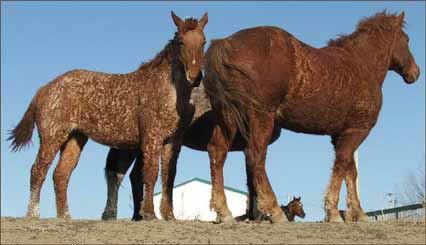|
|
|
Horse dander a cause of asthma in children |
|
An article in the BMJ (BMJ. 2000 July 29; 321(7256): 286–287) by Graham Roberts and Gideon Lack at St Mary’s Hospital in London used three cases (of 28 seen recently) to illustrate that horse dander can be a significant cause of a child’s asthma even in an urban environment. An eight year old boy started to wheeze and had to be treated in A & E immediately after riding a pony at a fête; tests revealed allergy to both horse dander and house dust mite A nine year old boy with badly controlled asthma was found to be reacting to his sister’s riding clothes which were kept in their shared bedroom and improved dramatically once she stopped riding. Avoidance of allergens is critical in the management allergy and may be sufficient to control symptoms but although it is simple to avoid direct exposure to horses, avoiding indirect exposure can be more difficult. First Published in 2000 Click here for more research on the possible causes of asthma
|













